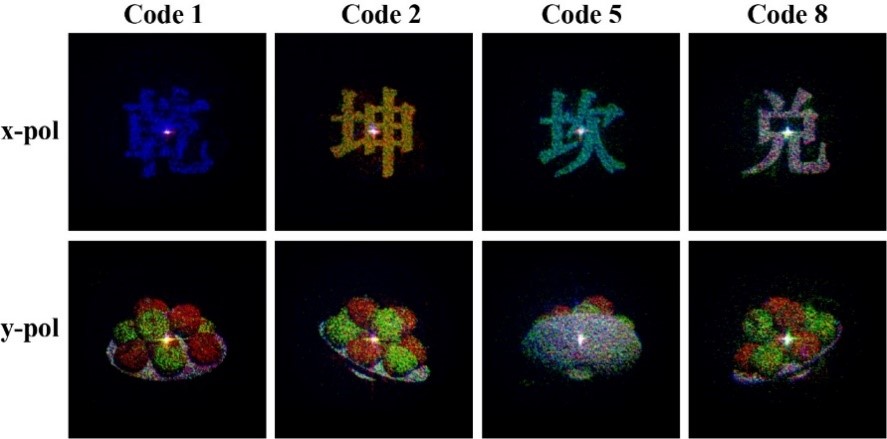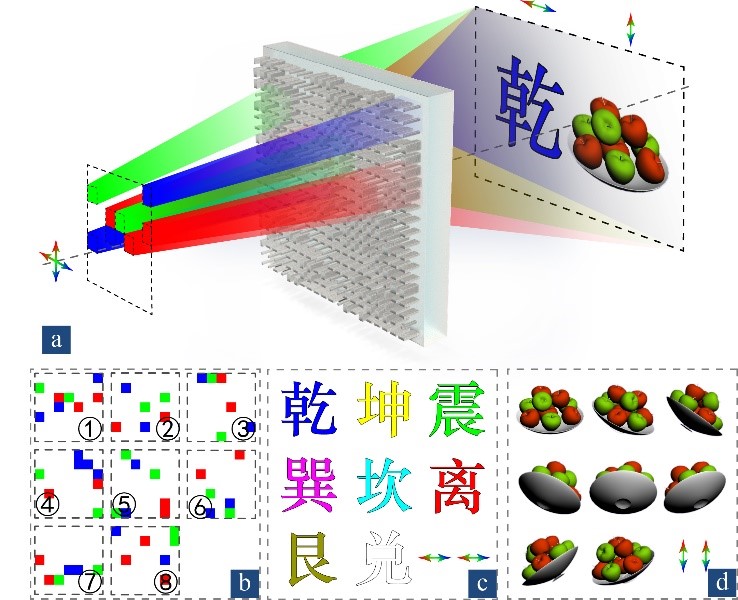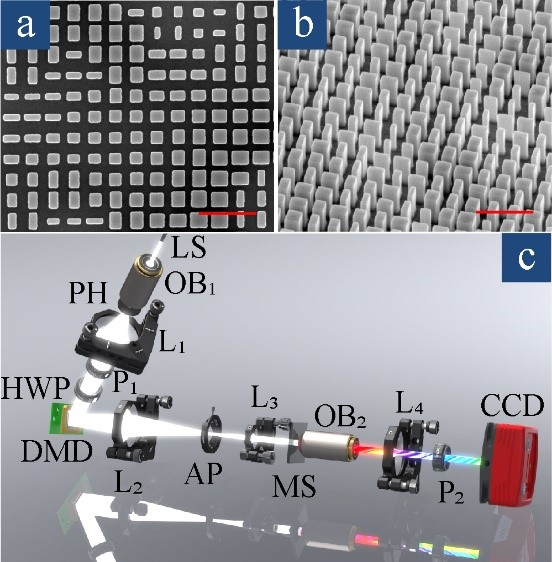| Dec 14, 2022 |
Color holographic video display based on code division multiplexing metasurface
(Nanowerk News) Directly reconstructing the physical wavefront of objects in target scene for watched naturally by human eyes, holographic display is considered as one of ultimate display technology. Spatial light modulators (SLMs) are core devices in display systems to manipulate the illuminating light. However, current commercial SLMs have several issues, such as too large size of pixel, restricted capability of modulation, diffractive noise and so on, which has become the bottleneck for the development of holographic display. A new element or device should be introduced to take the place of SLMs.
|
|
As the novel nanooptical element, a metasurface consists of subwavelength artificial structures that has strong interaction with light. Consequently, it can realize specific functions that are impossible for traditional optical elements and devices by excellently manipulating the amplitude, phase, polarization, wavevector and other parameters of light. Combined with holography who has the properties of redundancy and robustness, optical metasurfaces own more degrees of freedom and flexibility for design and applications.
|
 |
| Experimental reconstructed results of color holographic video display based on CDM metasurface holography.
|
|
Researchers have devoted a lot of time to increase the multiplexing degrees by considering the polarization, orbital angular momentum, angle and other factors, which boosts the information capacity and density of metasurfaces. Although metasurfaces have so many advantages and a plenty of effort has been put into, but it is still uneasy task to fabricate a metasurface for the feature size of hundreds of nanometers. As a result, it is one of biggest challenges to realize dynamic modulation by metasurfaces, specially for color holographic display, which requires the element can offers different manipulation at the working wavelengths of R, G and B.
|
|
The authors of this article in Opto-Electronic Advances ("Time-sequential color code division multiplexing holographic display with metasurface") propose multiwavelength code division multiplexing (CDM) metasurface holography via combining birefringent metasurface and introduce the concept of CDM from communication technology.
|
 |
| Color holographic video display based on CDM metasurface. (a) is the schematic, (b) exhibits the coded references, (c) and (d) are target color images encoded and recorded for horizontal and vertical polarization channels, respectively.
|
|
According to the basic principle of CDM, a series of codes are selected as "keys" to encode and decode the information. The authors optimized the coded reference and introduce multiwavelength channels to encode the information of both references and target scene into a single metasurface for optical data recording and reconstruction in a large number of channels.
|
|
Deeply analyzing the mechanism of color CDM and studying the properties of holographic wavefront encoding, the authors brought non-orthogonal color-coded references into CDM metasurface holography. A multichannel iterative optimization algorithm is presented and utilized to encode three groups of images and color code reference into the metasurface hologram.
|
|
Titanium dioxide nanorods were designed to provide two linear polarization channels working at visible range because of the birefringence of the structures. The geometric sizes of nanorod are scanned to optimize the electromagnetic response of nanostructure, and then the sample data can be obtained for fabricating the metasurface by electron beam lithography and reactive ion etching.
|
 |
| (a??? b) Top and oblique views of scanning electron microscopy images of fabricated samples, where the scale bar represents denotes 1 µm. (c) Experimental setup. LS, the supercontinuum laser source; OB1 and OB2, objective lens; PH, pinhole; L1???L4, convex lenses; P1 and P2, polarizer and analyzer; HWP, half-wave plate; DMD, digital micro-mirror device; AP, continuously variable iris diaphragm; MS, metasurface; CCD, charge coupled device.
|
|
In experimental verification, the authors successfully encoded information in 48 independent channels into a single metasurface, and only the correct color-coded illumination with correct polarization state can read out the recorded information. A time division multiplexing color illumination system was built with a digital micromirror device (DMD), and the target information is decoded frame by frame and one wavelength to another via time-sequentially specific illuminating and loading corresponding code pattern on DMD. And then, the color holographic video display can be achieved.
|
|
The method demonstrates high density of information storage, high compacity with other multiplexing method, high flexibility in design and high security of optical data, which is promising to be applied into the field of display, information storage, optical encryption, multifunction dynamic manipulation and others.
|



